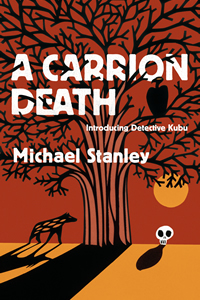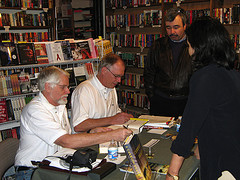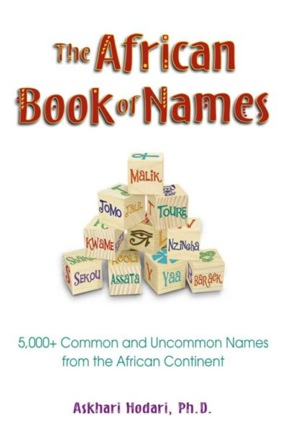
Yes, yes, I know: the photo du jour is a trifle on the wide side, but I love it. I must be feeling expansive today.
That was not, I gather, the prevailing mood at post offices across the country today as last-minute tax filers raced to get their income tax returns postmarked on time. (For those of you reading this outside the United States: here, federal income taxes are due April 15, the anniversary of the day President Abraham Lincoln was shot.) I’m a get-it-out-of-the-way-as-soon-as-possible sort, but apparently, many of my fellow citizens are not, judging from the lines around the block at my neighborhood post office.
While taxes are already on your mind, US-based writers, now is a great time to think about next year’s returns, and not only because you hope you’ll be shaking your head over the sometimes complicated paperwork associated with collecting royalties. While that Schedule C you’re using to itemize your writing and promotion expenses is fresh in your mind, why don’t you go ahead and organize your 2009 accounting system/homemade spreadsheet/shoebox that holds your retreats so that it will be easy throughout the year to come to keep your receipts from writers’ conferences neatly separate from your submission-related expenditures?
If you’re not already filing a Schedule C to formalize your writing as a business — a move that could, for instance, legitimize deducting things like postage for your queries and submissions, writers’ conference fees, and other expenses you may be incurring while trying to get your work published — you might want to consider having a nice, long chat with a tax professional well versed in preparing writers’ returns (rather than, say, talking with someone like me, who is neither a tax professional nor plays one on TV) about whether this option might make sense for you.
Why a tax pro who specializes in artists? Because someone unfamiliar with how genuinely strange our road to success can be may not be aware that a writer needn’t necessarily earn income from writing in order to file a Schedule C. But as a non-earning writer must meet a number of specific conditions before, say, writing off the cost of buying new releases in one’s chosen book category as market research or deducting the fees of a freelance editor, get the low-down from someone licensed to dispense advice on the subject before you file any paperwork with the IRS.
Where might you find such an expert? Try contacting your local writers’ association and asking for a recommendation. If you aren’t lucky enough to live near a good one, you may have to get a trifle creative. Show up at a book sighing by a local author and ask for a recommendation at question time. Find out who your community theatre uses as a tax pro, or call a good art gallery; tax pros who deal with one kind of artist sometimes work with other types. For more suggestions, take a gander at Carolyn See’s excellent MAKING A LITERARY LIFE, for my money still one of the best how-to guides for aspiring writers out there.
What you should most assuredly NOT do is just grab a bunch of tax forms next April 14 and start filling in unsubstantiated amounts. Like any other deductions, it’s in your best interest to make sure that your writing expenses are exceedingly well-documented, both in your no doubt impeccable financial records and in the form of receipts, and unquestionably tending to advance your writing career. Proving that generally requires quite a bit of advance preparation.
Which is not, as I mentioned above, every taxpayer’s cup of tea. Writer, know thyself!
Why, just yesterday, I was sharing a delightfully steamy bowl of Thai coconut soup with an exceptionally talented author of literary fiction (who shall remain nameless for the nonce, but rest assured, I’ll let you know when his next novel comes out) when the waitress informed us that we had just spent many hours discussing things writerly, and the kitchen would like to close. At the end of a roughly ten-minute discussion of the locations of places that might conceivably be willing to serve us coffee at that hour, the author sighed and said, “Well, maybe I should just go home and start my taxes.”
Since it was by then 10:30 pm on the night before said taxes were due, I naturally laughed. Judging from his reaction, though, he hadn’t meant it as a joke: he honestly had not begun to think about his imminently-due return.
I would be tempted to think of this reluctance to plan for the hard realities of life as merely part of his substantial and complicated personal charm, but the fact that most of the working artists of my acquaintance seem to indulge in this particular form of procrastination leads me to suspect that it may be endemic to our breed of creative dreamers.
Let’s face it: as a group, we tend to defer serious thought on the business side of being an artist until we actually find ourselves in the situation, don’t we? As we’ve discussed throughout this series, many, if not most, aspiring writers long for publication with a major house, but don’t take the time to learn what that would actually mean in practical terms, let alone prepare for it.
Case in point: several years ago, I had the great pleasure of teaching a class on how to craft attention-grabbing queries to a room stuffed to the gills with intelligent, well-read writers. These folks had really done their homework, and most of them had novels and NF books very close to being ready to be sent out the door.
As widely diverse as their writing projects were, I was struck, as I always am, by the great similarity of their descriptions of their dream agents. Everyone, without exception, wanted a well-established agent at a well-known agency to fall in love with the book in question, particularly with the writing, and represent it with intelligence and verve.
“That’s great,” I said, when the last student had expressed this hope. “What else do you want from your agent?”
The room fell silent.
I am used to this; it always happens at this point. “What about an agent with experience in selling your type of book?” I suggested. “An agent who has built up the connections to be able to get your book or book proposal under the right eyes right away?”
Well, yes, the students conceded, that would be nice. As we discussed why that might be a plus, however, I could tell that they were uncomfortable with the prospect of adding something this specific to their wish lists — an interesting reluctance, considering that as we saw earlier in this series, an agent who does not have those connections is going to have a significantly harder time selling a writer’s manuscript.
So I persisted. “What about an agent who is hungry? Would you be happy to be represented by someone with a hundred clients, so the success of your book will be only a small proportion of her year’s income, or would you prefer to be one of twenty, where each sale counts more to the agent?”
This one was difficult even to get the students to talk about in theory, let alone express a personal preference; again, these are bright, talented, well-read people, yet their body language made it obvious that the very idea of setting anything but the most minimal expectations for representation scared them a little. It was unfamiliar territory, and in a sense, by even asking them to think about it, I had broken one of the most sacred of the writers’ conference taboos: implying the possibility that not every agent who likes an author’s work is necessarily a good fit for it.
This truth is so important to a writer’s happiness in working with an agent that I’m just going to go ahead and restate it as a rule: a writer needs not just any agent to represent her work; she needs the right agent.
That’s right, campers: after yesterday’s post, which concluded that most aspiring writers give up before they’ve given their manuscripts a sufficient chance to succeed, I’m going to talk about how they can falter after they do succeed, at least at clearing the first major hurdle on the path to publication. Today, we’re going to discuss the often astonishingly disorienting moment when a writer receives an offer of representation.
I know, I know: I’m addressing this topic out of chronological order. Can you blame me for wanting to end this sometimes depressing series on a high note?
As we saw earlier in this series, how an agent chooses to handle a manuscript can have almost as strong an impact upon its market prospects as whether he chooses to handle it in the first place. It’s not all that uncommon for good writers to end up feeling that their careers are being stymied by agents who, while not actually bad at their jobs, at least do not apparently share the same goals for the book in question. Anyone who has ever attended a writing conference has probably met at least one writer who gave her soul to an agent for a year or two, only to find herself dropped when the book did not sell right away.
For a writer who has yet to find representation — and if you are one of these, don’t be hard on yourself; there are plenty of brilliant writers out there who are unrepresented or between agents — it may be hard to feel sympathy for a writer in this situation. After a long, hard spell of querying and/or submission, ANY agent willing to represent a book can start to look pretty good. So when the aspiring hear such complaints, they may be tempted to conclude that if the complainer’s book did not sell, or if the agent stopped sending it out, or if the agent never sent it out at all, it was because the manuscript itself had some irredeemable fault.
Don’t censure yourself if you are one of the many who would automatically assume this: as we have seen throughout this series, it is something that writers are taught to believe, and the source of countless hours of self-doubt. Most of the writing manuals and pretty much all of the classes and conferences teach us to believe that the blame must lie with either the book or the writer.
There is a perfectly good reason that this is the case: what the manuals and experts are selling, generally speaking, are ways in which the writer can alter the book, the pitch, the query letter, even her own work habits, in order to make the book more marketable. Many, many self-styled experts make quite good livings in this manner.
And more power to the ones who are gifted at it, I say: when aspiring writers improve the aspects of the road to publication that actually lie within their control, while learning not to obsess about the myriad aspects of querying, submission, marketing, and publication that are utterly outside the author’s ability to affect them, the process becomes not only easier, but substantially less frightening. Like using language correctly and effectively, promoting one’s writing utilizes a set of learned skills.
I regularly teach this type of class myself, regarding it as a way to arm writers with the tools that will help them succeed in a genuinely difficult endeavor: getting their work noticed by people who can bring it to publication. After all, it would make little sense to teach Ten Tips on Being a Better Agent or Sharpen Your Eye for Talent: Make Yourself a Better Editor to groups of aspiring writers. The fact remains, though, that even the best-prepared author of the best-written book is hugely dependent upon the skills, tastes, and connections of her agent and ultimately, her editor.
As we saw earlier in this series, the power that agents wield has gone up astronomically within our lifetimes. The reason for this is simple: the consolidation of the major publishing houses. The result is that agents and editors at small publishing houses (who sometimes also prefer to work with agented writers, but often make exceptions) have become the arbiters of what does and doesn’t get published in the United States. The editors at the major houses see only a hand-picked minority of the writing actually being produced.
This should all sound familiar to you by now, right? Since you are already aware of the importance of having an agent, I shall not continue to harp upon this point, except to say: since the author now does not participate in the selling process, it is more vital than ever to find an agent who will represent your work well.
When I pointed this out to my class, however, my students did not like this conclusion at all. “If an agent loves my work,” one of them asked, “won’t he automatically represent it well?”
The short answer is a resounding NO, but the long version requires a two-part answer. First, a certain percentage of the people working in any field will be still learning how to do it, and in the publishing industry, where success is so heavily based upon connections and luck, the agent who likes your book best (or, as usually happens, the one who likes your book FIRST) may not necessarily be the one with the right connections.
Thus, that story we all so often hear at conferences: the agent falls in love with a book, signs the author pronto, sends the book out to an editor or two — then sits helpless after the first few contacts reject it. Since it is traditional for a book to be submitted to only one editor at each imprint, having your work sent out by an agent with the wrong contacts may actually endanger its chances of being seen by the right editor.
Especially if the agent has a track record of giving up after just a handful of submissions. As with querying, until a manuscript has been circulated for a while, no one can really say for sure how marketable it actually is.
The second answer to the question is less well-recognized amongst writers. Now, it is the NORM for good agents to ask for significant revisions on a book or a book proposal BEFORE sending it out to editors. Effectively, this means that the agent you choose — and who chooses you — is your first editor. Which means that it is absolutely vital to sign with an agent whose taste and integrity you trust.
I want to get the word out there about the edited-by-the-agent phenomenon, because I have found that most unagented writers are quite unaware of it (or were before we discussed it in this series). Not all agents require up-front revisions, but a significant minority amongst those who work with previously unpublished writers do. I spent the first two and a half months of my memoir’s representation contract revising and re-revising my book proposal, at her behest; one of the best novelists I know spent a YEAR AND A HALF in agent-required revisions before her agent so much as photocopied it.
Other agents prefer to suggest only minor tweaking before sending out the first round of submissions, then, once they have garnered significant editorial feedback, ask the author to revise the book in accordance with the changes editors said they would like to see. (Be warned in advance: if three editors saw it, in all probability two of them will ask for mutually contradictory changes. A good agent can help you figure out which advice is worth taking.) Here again, many first-time authors are astonished to find themselves, a year or two after signing with a terrific agent, still in the throes of revising an as-yet unsold book.
Naturally, I explained all of this to my class. By this point, my students were sitting speechless, aghast and disappointed. As much as I would have liked to reassure them that their work would sell well and immediately, the fact is, a quick sale of an unrevised work to a major publishing house has become quite rare.
As I MAY have intimated once or twice earlier in this series, I think it is quite unfair to aspiring writers everywhere that the prevailing wisdom so often says otherwise. Yes, from the agents’ and editors’ points of view, publishing is a fast-moving business, but from the authors’, it sometimes seems as if it barely runs on electricity.
I feel a trifle disingenuous saying this, because actually, my process has been one of the few exceptions: from winning the 2004 PNWA Zola Award for NF to signing with my agent to book sale was only eight months, positively lightning speed. To put this in perspective, though, my book was only being circulated to editors for the last two of those months. The period between when I signed the agency contract through when the book was first sent out to editors was entirely devoted to tweaking my book proposal my agent’s behest.
Let that sink in for a moment: that revision time was unusually rapid, with my getting pages back to her significantly prior to the deadlines we had agreed upon.
This realization, as you may well imagine, made my students groan, as it would many writers. We all like to think that once the inspiration fairy has bonked us on the head often enough to get us to churn out a complete manuscript, that’s that. Since attracting an agent’s interest is so very arduous, the vast majority of unagented writers tend to idealize just how much of a relief it will be to sign that contract. (Yes, I know I’m reviewing material we’ve covered already in this series, but since this is the last post, I’m entitled to a spot of review.)
“Phew!” these writers tend to think. “I’m working my fingers to the elbow now, but once I sign with an agent, my period of hard work will be over. I can just hand my finished book (or book proposal) to my agent, and wait for her to sell it. And because she will adore my writing, that will happen in a matter of weeks.”
With such expectations, it’s no wonder that so many writers give little thought to the personality of their dream agent: they are not expecting to have much interaction with this paragon. The agent, in this fantasy, is just a one-time broker.
Now that you know from having slogged faithfully through this series that working with an agent is quite a bit more complicated — and lengthier — than that, I ask you the question I put to my students: what do you want your agent to do for you other than to sell your book?
Ponder that for a moment, please, while I move back to the point in your writing career when your answer could hardly be more important: the days immediately following your receiving an offer of representation from someone who may or may not be the agent of your dreams.
Remember a few posts ago, when I mentioned that too many aspiring writers take the time to learn a little about their soon-to-be agent before gasping a grateful “YES!” to that long-awaited offer of representation? The best antidote to an uninformed decision is to ask the offerer a few questions: will you be working with the agent directly, for instance, or an assistant? (If the latter, it is definitely worth your while to have a conversation with the assistant before you decide, too.) Will the agent want revisions to what you submitted, and if so, would she be open to setting aside some serious time to discuss them? What exactly does the agent LIKE about your book, your ideas, your writing style? If you are not a person who likes hand-holding, is the agent willing to give you your space to work?
And so forth. The AAR’s website an excellent list of preliminary questions new authors should ask agents, to get you started.
While the answers are important to figuring out how the agent will expect you to work with her, the discussion actually serves an even more important secondary purpose: it gives you are foretaste of what it will be like in the weeks and months after you sign, when your new agent is ruling your writing life.
It behooves you, then, to make very sure that this person is someone with whom you would be willing to be in frequent e-mail contact; is this a person you would be comfortable picking up the phone to call if you run into problems with your editor, for instance? If you’re the type of person who is driven crazy by uncertainty, for whom no news is definitely not good news, you will want to know whether the agent prefers to issue periodic updates on the status of books being circulated, or whether you should feel free to ask whenever the wait starts to seem long. Knowing in advance how frequent contact has to be before the agent starts to feel hounded can save a writer a heck of a lot of chagrin down the line.
Ask about her taste in literature, to get some indication if this is a person you can trust to give you writing feedback. (You should ask the same question, incidentally, of ANYONE you ask for feedback, from your best friend to a freelance editor. If you do not like the same kinds of writing, chances are lower that the feedback will be truly useful to you.) Find out whether the agent likes to give extensive, line-specific feedback, general feedback, or no feedback at all on a manuscript. If you are the kind of writer who hesitates to change so much as a comma without double-checking with someone else, you’ll probably be happier with a heavier commenter.
If, on the other hand, you tend to fly into an ungovernable rage at the slightest suggestion that your work is less than perfect…well, you’re probably going to want to see a doctor about your blood pressure before you sign either an agency or publication contract; as I mentioned yesterday, the professional writer’s life tends to be stuffed to the gills with agents, editors, marketing specialists, etc., suggesting forcefully that changes really ought to be made to a manuscript. But if you already know that you would prefer to keep editorial input minimal, a more hands-off agent may be a better choice for you.
You should also ask for a current list of clients — listings on agency websites are not always up-to-date — and for a few days to rush to the bookstore and see what their books are like. (Don’t even CONSIDER skipping this step; skimming over the first chapter of several of an agent’s clients’ books can tell you a great deal about both her literary tastes and how heavy-handed an editor she is.) You would even be well within your rights to ask if the agent to pass your phone number along to another client who writes similar books, so you can chat about what it is like to work with this particular agent.
See why I have been so adamantly pushing the idea of querying several good agents simultaneously — and continuing to query and submit while any given agent is reading your manuscript? Ideally, I would like you to have the luxury of having these conversations with several agents before you decide who should represent you and your work.
I speak from experience here: I e-mail and talk with my agent very frequently, and not just because he and I are both charming conversationalists; when I have an idea for a new book project, he is my sounding board. The very idea of having that much unalloyed contact with an agent with whom I could not communicate well is laughable. Thank goodness I had listened to the excellent advice my more established writing friends had given me, and made absolutely certain that I was signing with an agent I LIKED.
Oh, and he professes to love my writing, too.
But our rather joking relationship certainly wouldn’t work for every writer and agent, any more than his rather sparse feedback style would be optimal for a writer looking for serious editorial feedback from her agent. Just as all of our manuscripts are different, so are each of our needs and desires for this peculiarly intimate relationship.
So I ask you again: what do you want from your agent, other than to sell your books? How do you want to work together? Or, if you’re being honest about it, has your only criterion been that the agent in question would say yes to you?
Bears a bit of thought, I think.
Especially for those of you who are hoping to be career writers, rather than simply the authors of a single, well-respected book. While the common fantasy of being swept off one’s feet by someone spouting fabulous promises of fame, fortune, and a spot on Oprah’s book club list is all very nice, being aware of the realities of how books actually get published, what role your agent will play in that process, and how you would like your work to be handled will enable you to come up with realistic expectations that will help preserve you from the awful fate that often dogs aspiring writers who suddenly find themselves with agent: having gotten precisely what you thought you wanted, yet still feeling disappointed because what you got was not a fairy tale.
Down-to-earth expectations can, perversely, render it easier to achieve magnificent outcomes — and not just for you. If you choose well, aligning yourself with an agent who both has the connections to sell your work, expectations for it that similar to yours, and communication preferences compatible with your own, you’re probably going to end up being a better client. By approaching finding an agent deliberately, cautiously, and with an understanding of your own goals and working style, rather than blindly rushing into a contract with anyone who is interested in representing you, you are much, much likelier to feel supported throughout the publication process — and end up with the results you want.
So investing some thought in figuring out just what it is you do want is writerly time well spent.
If all of this sounds like dating, well, it is: writer-agent relationships often outlast the average marriage. You don’t want to wake up in a year and find yourself in a long-term relationship with an agent who no longer makes you feel your work is special, do you?
Why am I bringing this up at the very end of a dense series on publishing realities, you ask? So you may lift your eyes from the long, hard road to publication and ponder not only the ultimate goal of seeing your book in print, but the professional marketer — which is, after all, what an agent is, right? — you hope will help you get it there.
Congratulations on making it all the way through this long, serious series; I hope it will prove helpful to you. And, as always, keep up the good work!
 PS: don’t forget to check in this weekend for the promised special treat!
PS: don’t forget to check in this weekend for the promised special treat!

 PS: don’t forget to tune in on Friday for our end-of-the-week treat!
PS: don’t forget to tune in on Friday for our end-of-the-week treat!





















 is not the same thing as this
is not the same thing as this 